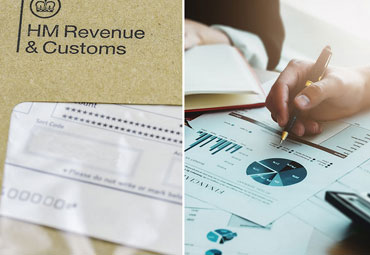1. Personal allowance and higher rate increases for the UK
Your Personal Allowance increases from £11850 to £12500. The personal allowance is the amount that you can earn before paying tax.The higher rate threshold increases from £46,350 to £50,000. This is the threshold at which you start paying the higher rate of tax on your profitsThe additional rate threshold remains unchanged at £150,000
As you’re self-employed, you pay tax on your profits, which is what you’ve earned after your expenses are deducted.
2. Are you an Employer? The national living wage increases nearly 5%.
From 1 April 2019 the national living wage increases by 4.9%, from £7.83 to £8.21. This equates to giving a full-time worker a £690 annual pay increase.
There are other changes to minimum wages that business owners should know about:
The rate for 21 to 24-year-olds increases 4.3% from £7.38 to £7.70 per hour.The rate for 18 to 20-year-olds increases 4.2% from £5.90 to £6.15 per hour.The rate for 16 to 17-year-olds increases 3.6% from £4.20 to £4.35 per hour.The rate for apprentices increases 5.4% from £3.70 to £3.90 per hour.The accommodation offset increases 7.9% from £7.00 to £7.55.
Employee pension contributions increases from 2% to 3% from April.
3. Dividend Allowance:
The good news is that the government has made no further changes to the dividend allowance for 2019-20 which remains at £2000.
4. Self-employed National Insurance contributions:
Here’s how the National Insurance thresholds and bands change for 2019-20, for both sole traders and limited company directors.
Small profits threshold, Class 2 NICs and Class 4 NICs (sole traders).
Small profits threshold – this increases from £6,205 to £6,365 for 2019-20. You start paying Class 2 NICs if you earn more than this threshold.Class 2 NICs – the flat rate increases from £2.95 per week to £3.00 per week for 2019-20.Class 4 NICs thresholds and limits – the earnings threshold before you start paying these increases from £8,424 to £8,632 for 2019-20. You pay 9 per cent of profits between £8,632 and £50,000 per year (up from £8,424 and £46,350), plus 2 per cent of what you earn above that.
Employer and employee National Insurance contributions (limited company directors).
Limited company directors are classed as employees and have to pay employer National Insurance contributions through the company and employee National Insurance contributions via payroll.
Secondary threshold for employer NICs – this increases from £8,424 to £8,632 in 2019-20 (you’ll pay employer NICs of 13.8% on annual salary payments above this threshold).Employee NICs – you pay 12% of earnings between £166 and £962 per week in 2019-20 (up from £162 and £892 per week). You pay 2% on any earnings above £962 per week.
5. An increase in the Capital Gains Tax allowance
You can make up to £12,000 tax-free when you sell assets that qualify for Capital Gains Tax (up from £11,700 in 2018-19).
Basic rate taxpayers pay 10% of Capital Gains Tax on profits above the allowance. Higher and additional rate taxpayers pay 20% except for buy-to-let investors or those with a second home – the rate for selling a second property is 18% for basic-rate taxpayers, and 28% for additional-rate taxpayers.
6. Self-employed ISA allowance
For the third year in a row, your ISA allowance remains frozen at £20,000 for 2019-20. Your ISA allowance is the amount you can save into an ISA tax-free. You can choose to invest that allowance either entirely in cash ISAs, stock and shares ISAs, or a mixture of both.
Personal Savings Allowance which lets basic-rate taxpayers earn up to £1,000 in savings income-tax free.
7. Making Tax Digital: are you compliant?
After consultations, confusion and calls to delay, Making Tax Digital for VAT goes live from 1 April 2019.
VAT-registered businesses with a taxable turnover above the VAT threshold of £85,000 need to make sure they’re complying with the new rules.
For VAT periods from 1 April businesses need to keep digital tax records and submit their VAT return using Making Tax Digital-compatible software.
HMRC says that during Making Tax Digital’s first year, it will “take a light touch approach to digital record keeping and filing penalties where businesses are doing their best to comply with the law.”
But they’re clear that this doesn’t mean a blanket “no penalties promise”, so if you’re not sure of the rules it’s important you get up to speed today.
If you need any further information regarding any of these changes, please get in touch.

